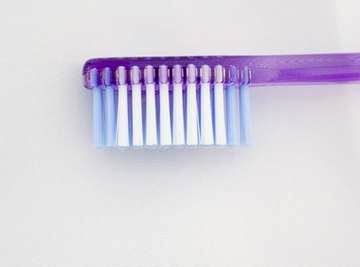
Creating a simple robot capable of independent movement is one of the most rewarding experiences a hobbyist can have. While not as complicated or as versatile as other robotics projects, an autonomous robot is nonetheless a great experiment to conduct in electronics, design and movement systems.
This project can be completed in the form of a “bristlebot” within minutes using the proper materials, tools and method. A bristlebot also makes a great toy for your kids, your cat, or yourself.
- Scissors
- Toothbrush
- Double-sided sticky foam
- 3-volt pager/cell phone motor
- Sturdy copper wire
- Solder iron and solder
- 3-volt coin cell battery
If your components aren't centered properly, your bristlebot will scoot off in circles, or even tip over. Rearrange the components and try again.
Snip the bristled head off of a toothbrush and trim the remaining neck until only about 1/8-inch remains attached to the head.
Lay a thin strip of double-sided sticky foam along the top of the bristle head to form a mountable surface for your other components. The bristles themselves are now the “feet’ upon which your robot will scoot.
Solder two short lengths of sturdy copper wire to your pager/cell phone motor. Allow the solder to dry thoroughly before attempting to do anything else with the motor.
Stick the motor to the top of the bristly base with the turning shaft facing backward, or away from the snipped-off neck. Make sure the motor is centered on the top of the sticky foam and that the turning shaft is clear of the toothbrush’s edge.
Lay one of the motor’s copper leads (it doesn’t matter which) flat against the sticky foam, extending backward away from the motor. Stick the coin cell battery down firmly, directly on top of this lead.
Activate your bristlebot by bending the remaining copper lead down to touch the top of the battery. The motor will begin vibrating the robot forward at a pretty impressive speed.
Things You'll Need
Warnings
References
Warnings
- If your components aren't centered properly, your bristlebot will scoot off in circles, or even tip over. Rearrange the components and try again.
About the Author
Jordan Gaither is a degree-holding communications major with a successful freelance career. He's been writing professionally for over a year, and has just recently made the jump to full-time freelancer. Among others, he's been published by Internet Brands, Apartment Ratings, eHow, CV Tips and the Examiner.
Photo Credits
toothbrush image by Nicola Gavin from Fotolia.com
